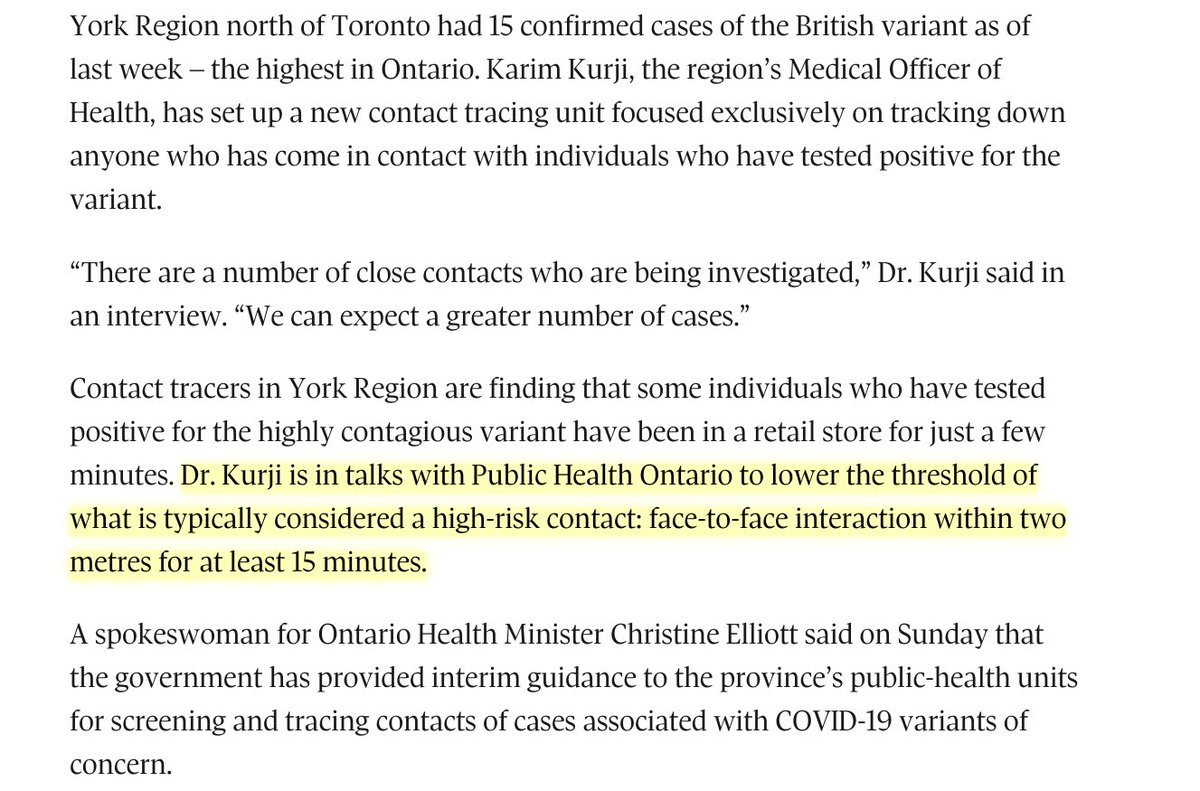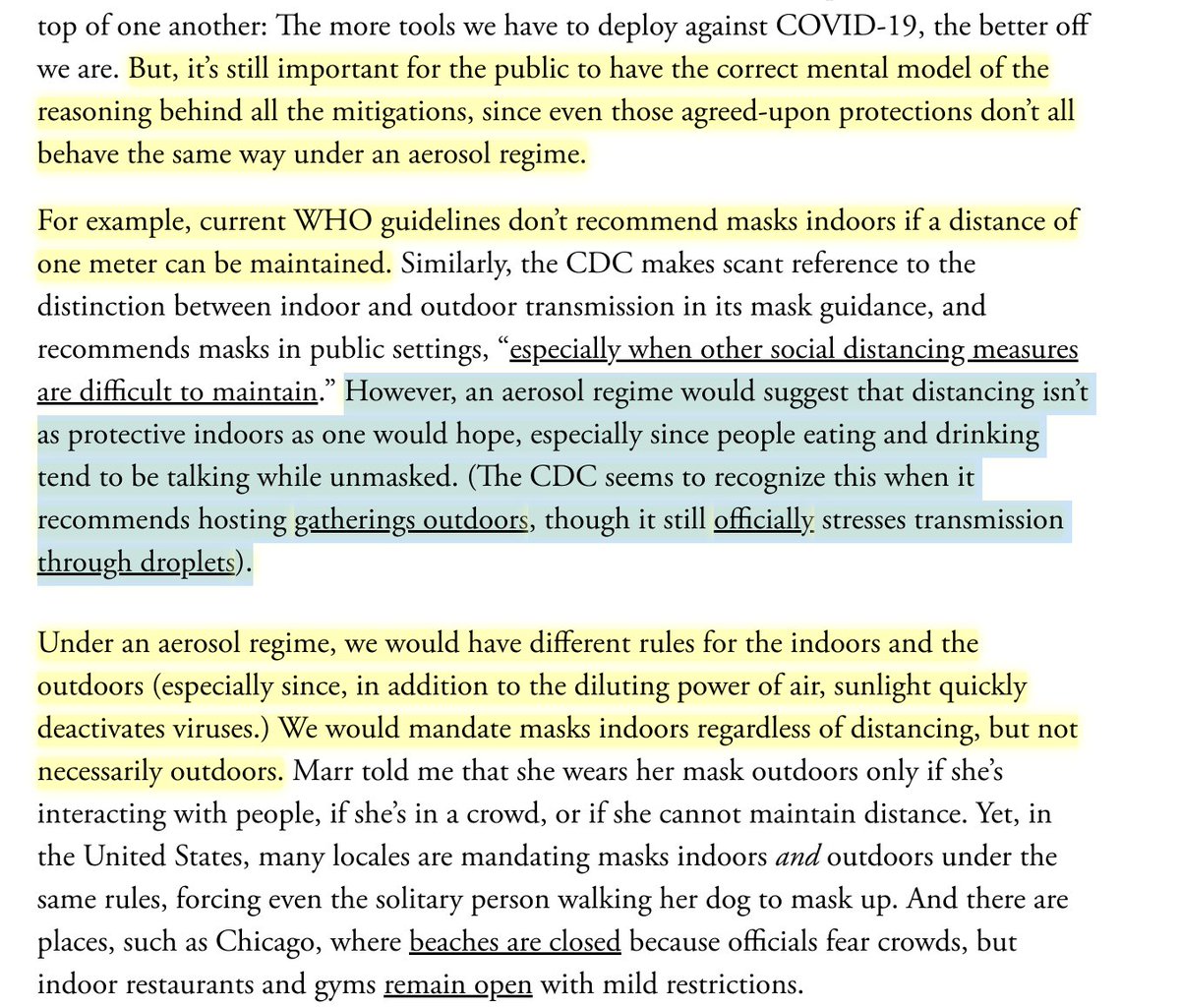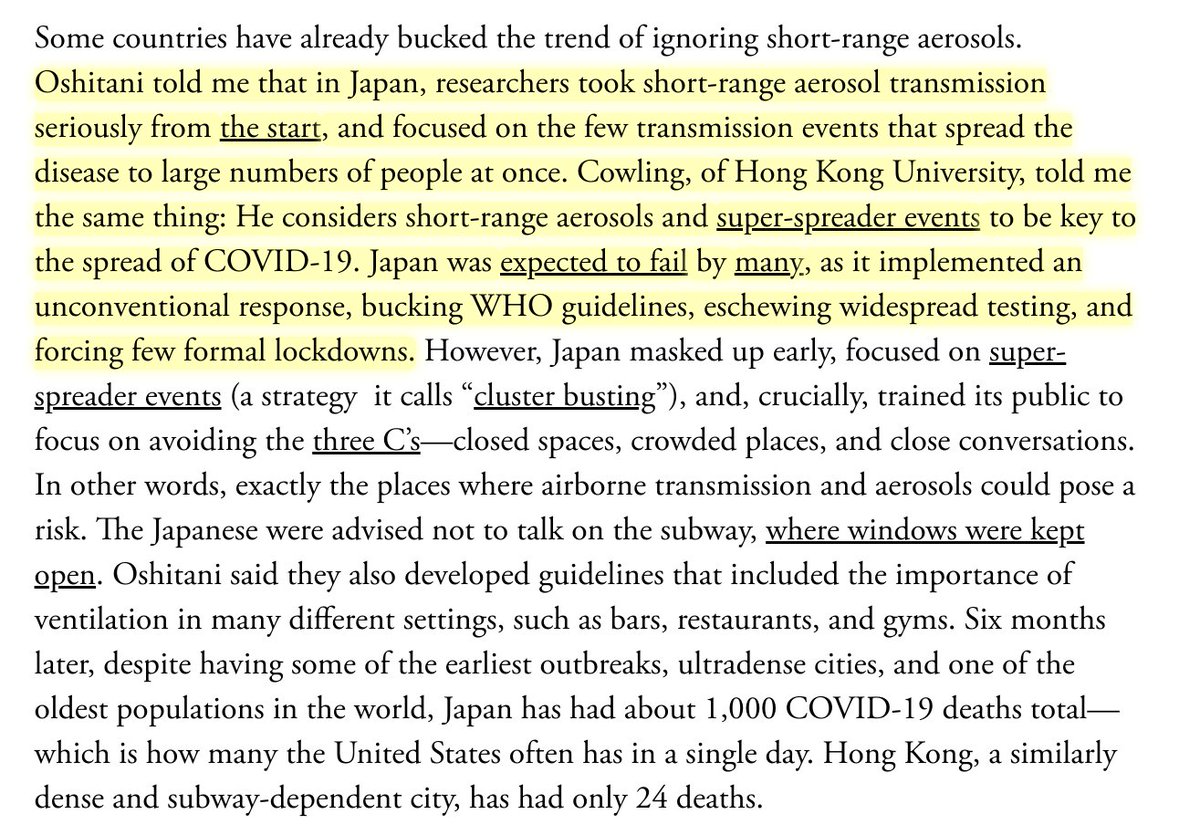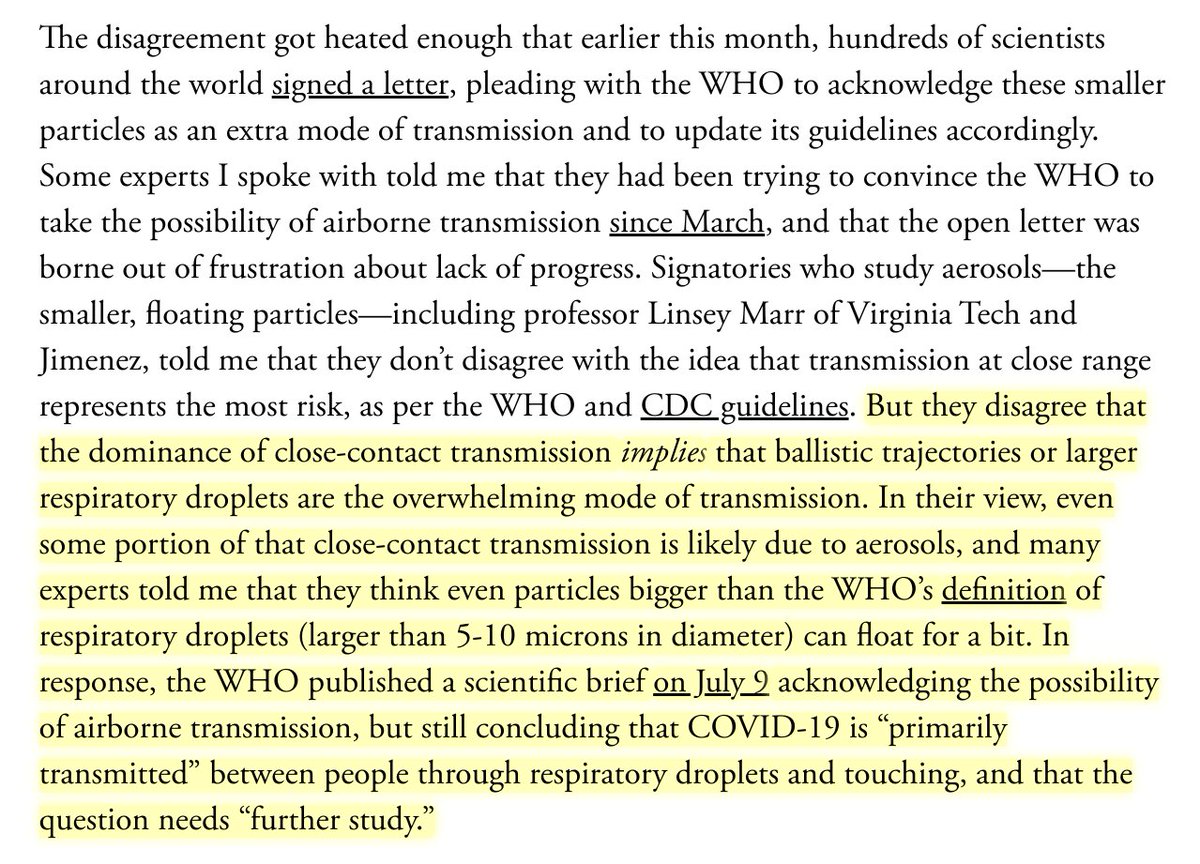Read this story and weep. This, after masks, is the biggest failure—both scientific and communication—of the pandemic in Western nations: the airborne nature of the pathogen. CDC changed this guidance last October. Japan and many other nations had it right on *February* of 2020. https://twitter.com/WSJ/status/1355916271662071816
It was only in December of 2020 the WHO guidelines got updated to wear masks indoors at all times—before they only said masks only if one couldn't be separated by three feet. These things matter so much because billions of people are live and work according to these guidelines.
I wrote about ventilation last July and to this day, I get contacted by desperate people who work in places that disinfect at length but don't have extensive ventilation mitigations, and consider six feet to as be-all-end-all. When they object, they're told that's the guidelines.
YES YES AND YES. Even in hospitals—which have aggressive ventilation & air is exchanged often and can mandate masks for everyone—we see the occasional outbreak because of the lunch room. Masks indoors at all times if around people *especially* if talking. https://twitter.com/Daniel22223333/status/1355941760195829760
Every time I make a peep on this topic (since the summer), I get inundated with these stories. People who haven't been told to keep masks on at all times indoors (even if distanced). People who know the importance of ventilation and aren't allowed to do anything about it. Tragic.
This is the reality in many places. I'm hoping the new administration will quickly play catch-up with the messaging. It's finally mostly there in the guidelines, but needs messaging push. WHO needs a lot of catch-up as well. Fine print isn't enough. https://twitter.com/nacnudnosilla/status/1355944915763605504
This sucks, but at least they mention open windows. My inbox and DMs are full of people—and have been for months—who are not *allowed* to do any mitigation for airborne spread at work even when it's easy and available because "it's not in the guidelines." https://twitter.com/Riastradh_/status/1355989688956366848
We need to give people the right *intuition* on how this pathogen transmits—including its airborne spread—along with the rules. The cut-offs (6 feet etc.) aren't binary and the mitigations stack up. Once people understand the underlying logic, they can make better decisions.
In any workplace, disinfecting high-touch surfaces—especially non-porous ones like stainless steel—is sensible. Doesn't have to be excessive. Handwashing is *always* sensible. Washing hands after taking in groceries is sensible. Fomites are not ruled out. https://twitter.com/cativavante/status/1356258229748199429
Nature editorial, February 2021. "The coronavirus SARS-CoV-2 is transmitted predominantly through the air" and "WHO and the CDC need to update their guidance." https://www.nature.com/articles/d41586-021-00277-8
One more article. Please note that the 6 feet/15 minute rule was *never* good advice because the rule didn't make sense for the public. It would have been better to properly *explain* the mechanisms of airborne transmission so people could use judgement. https://www.theglobeandmail.com/canada/article-covid-19-variant-in-barrie-outbreak-upends-conventional-wisdom-of/?utm_medium=Referrer:+Social+Network+/+Media&utm_campaign=Shared+Web+Article+Links
Once you have rampant outbreaks, yeah, contact-tracing gets overwhelmed, whatever the rule. South Korea which used very aggressive contact-tracing to stamp out terrible outbreaks tracked everyone in same indoor space—even giant clubs. But you can only do that early in the game.
Yes, viruses like to take breaks, too, especially if people are eating or drinking! (Let's ocus on explaining mechanisms properly, including airborne transmission, rather than providing rigid/binary rules & incorrect/incomplete explanations, part zillion). https://twitter.com/Amtrak/status/1356981157754208257
While we are at it—and while noting that many experts in countries like Japan (and SK/Taiwan/HK) had airborne-transmission (AND overdispersion AND presymptomatic transmission) nailed by February 2020—here's our own imitable @linseymarr on March 5th, 2020. https://twitter.com/linseymarr/status/1235640400054046724
While we are at it—and while noting that many experts in countries like Japan (and SK/Taiwan/HK) had airborne-transmission (AND overdispersion AND presymptomatic transmission) nailed by February 2020—here's our own INimitable @linseymarr on March 5th, 2020 https://twitter.com/linseymarr/status/1235640400054046724
Went back my July article on ventilation & aerosol transmission that I wrote after listening to the infectious disease experts in Japan & Hong Kong, aerosol experts here like @linseymarr & reading the epi papers/reports that were, basically, yelling at us. https://www.theatlantic.com/health/archive/2020/07/why-arent-we-talking-more-about-airborne-transmission/614737/
We may *finally* be at a turning point for aerosols and airborne transmission—not just lip service but real recognition. Few of the Twitter people who've been saying this—and working so hard to be heard—for a year: @linseymarr @j_g_allen @kprather88 @Don_Milton @ShellyMBoulder
There are others, too. The message about aerosols and airborne transmission was dismissed, resisted, attacked despite increasing evidence (again Japan/Hong Kong etc. had this by Feb 2020). When it's written, it will be an interesting and illuminating history of how things fail.
Yes! Had them typed out and ran out of space and got distracted. Also @jljcolorado has been doing tremendous bilingual, global work. https://twitter.com/happyhexer/status/1357175586200850435

 Read on Twitter
Read on Twitter









